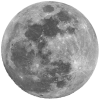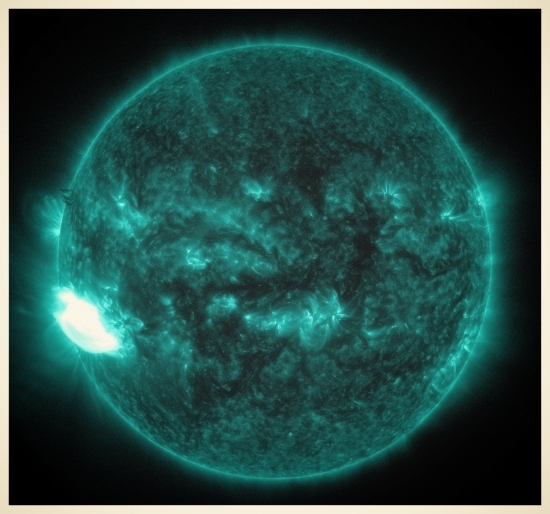You may already be familiar with the parable of the two wolves (a story typically attributed to the Cherokee nation), but in case you are not, I will summarize it briefly:
In the parable of the two wolves, a grandfather is talking with his grandson and tells him that each of us have two wolves inside of us that are at war: one wolf is good, representing love; the other is bad, representing fear. Upon consideration the child asks, “Grandfather, which wolf wins?” To which the wise old man replies, “The one you feed.”
There is something big happening on our planet; something is afoot. Normally, such a statement might seem a little “out there”, but I don’t consider it so. In fact, the statement seems fairly well supported given some of the information science has been passing down to us of late. Then again, it doesn’t take a weatherman to look around and see the weather, does it? From my perspective, it’s crazy more people - and politicians - aren’t clued in to some of the large changes unfolding in the modern age.
Among the big picture changes I have been keeping on my radar, two top the list for obvious reasons:
1) the Sun’s heliosphere (protective shield of energy surrounding the solar system) was observed to have weakened by 25% from 1998-2008.
2) The Earth’s own magnetic field is shrinking at an accelerating pace, “According to scientists' best estimates, the field is now weakening around 10 times faster than initially thought, losing approximately 5 percent of its strength every decade. But they don't really know why, or what that means for our planet.”
Scientists are baffled as to what is causing these large-scale, celestial-level changes to our cosmic environment, but one of the front-running theories is an impending pole-shift for planet Earth.
“Reversals are the rule, not the exception. Earth has settled in the last 20 million years into a pattern of a pole reversal about every 200,000 to 300,000 years, although it has been more than twice that long since the last reversal.
”
Googling the term “pole shift” is an invitation to all sorts of conflicting and often terrifying information. While some results assure a long, slow, innocuous shift spanning 1000's of years, others envision the planet’s crust turning on its mantle and reshuffling Earth’s geography in a matter of a few short, catastrophic minutes. I don’t know where the truth lies, but as with most things, it’s likely somewhere in the middle.
In searching for an analog to Earth’s perennial pattern of magnetic reversal, one need look no further than our own star. The Sun shifts like clockwork every 11 years. Our Sun’s regularity in this regard has given humanity a frequent and predictable opportunity to study the phenomenon - known as a “sunspot shift” - which represents one-half of the so-called “solar cycle,” which lasts 22 years in total. Therefore, in 22 years the Sun’s north pole will flip to south after 11 years - the completion of the sunspot cycle - then return once again to north after another 11 years, completing the larger solar cycle and beginning anew.
At the start of a new sunspot cycle the Sun is quiet, with few if any sunspots. When sunspots do appear, they assume a location centered along the Sun’s equator. The latter phase of the sunspot cycle is anything but quiet: solar maximum is typified by frenetic activity on the Sun’s surface, with heavy sunspot activity; their locations having moved from the equator to latitudes of +/- 30 degrees. In other words, the location of sunspots "polarizes" approaching a shift: their placement is drawn from equatorial center towards either the north or south pole.
This polarization of the Sun amounts to not just more activity, but more extreme activity. Sunspot location is relevant, because sunspots are the visual markers of where the Sun’s powerful magnetic fields have emerged from its interior. Yet, what interests me most about the solar cycle is not what it might teach us about our Sun, but what it might teach us about ourselves.
“As long as you still experience the stars as something ‘above you’, you lack the eye of knowledge.”
As human beings we are nature, a fact western culture seems to have all but forgotten throughout its evolutionary rise. As a species we are different, it's true. We possess a “reflective” type of consciousness that is unique among known life forms, but that does not make us unnatural. Yet, as westerners we seek to conquer the wild - to cause nature to submit to our will - to the degree that ending the very cycle of birth and death that has carried us this far seems to be something of an assumed cultural goal.
Still, we are nature. As such, it's curious that just as we’re witnessing such strange magnetic changes in our own celestial backyard, were also experiencing a ratcheting up of polar thinking planet-wide. A hair-brained comparison? Well, yeah … admittedly so. But are we really that different as humans, are we truly set apart? No, we are nature, like it or not. Hence, when winter comes and things fall dormant, a part of us diminishes as well; when spring arrives and life blooms, so too does a part of us experience renewal. We reflect internally that which nature shows us externally because we are nature. Yes, it's easy to set ourselves apart and see humanity as fundamentally different, but human consciousness - mysterious and misunderstood as it is - evolved here just like everything else, so why wouldn't we stop to consider how natural cycles might color our own lives?
“The true crisis in our world is not social, political, or economic. Our crisis is a crisis of consciousness; an inability to directly experience our true nature—an inability to recognize this nature in everyone and in all things.
”
So ... could the spike in strife and polarized thinking we are currently experiencing be related to some mysterious magnetic changes? I really wouldn’t know, I just thought it was an interesting idea — a fun thought experiment. I embrace such ideas because they help me better understand myself via the act of processing them. They assist me in finding my place in the world, and the worlds place in me; they awaken in me of the words of great thinkers such as Hermes, who said, “As above, so below”, and Tesla, who said, "if you want to understand the universe, think in terms of energy, frequency, and vibration."
Beyond any fancy words and grand theories, I can’t help but think about those wolves in the grandfather's story. Whether we know the reason or not, our world does seem to be spiraling into polarization. Maybe it’s time we asked ourselves the question: as a culture, which wolf do we tend to feed?
Americana Singer Songwriter Ed Dupas’ lived-in melodies unwind with reflective lyrics that speak to the current state of the human condition. Soothing where possible, agitating where necessary, and calling for change where appropriate. Ed Dupas creates and shares well worn wide awake music.
For more information about music, shows, merchandise and Ed, visit:


